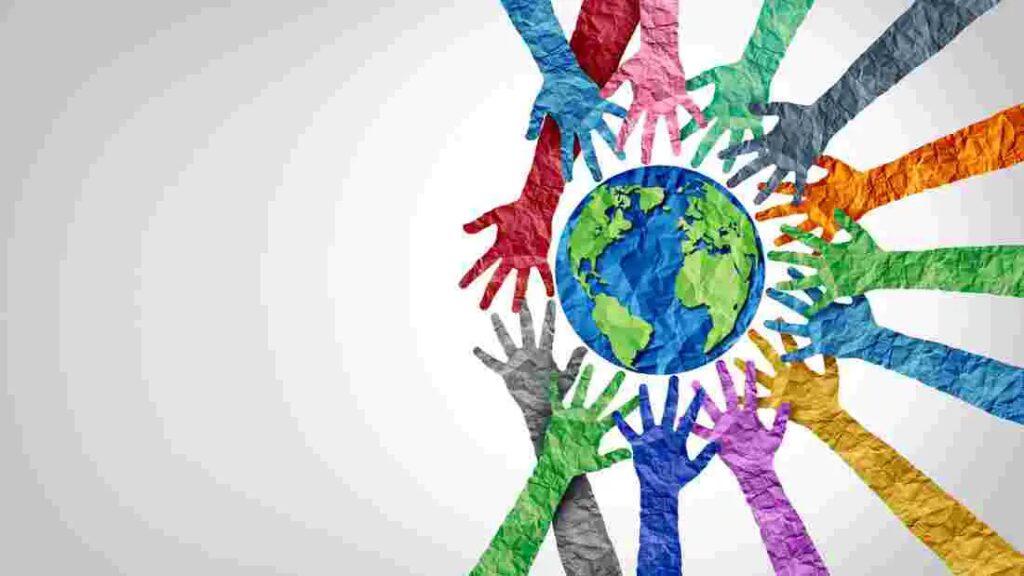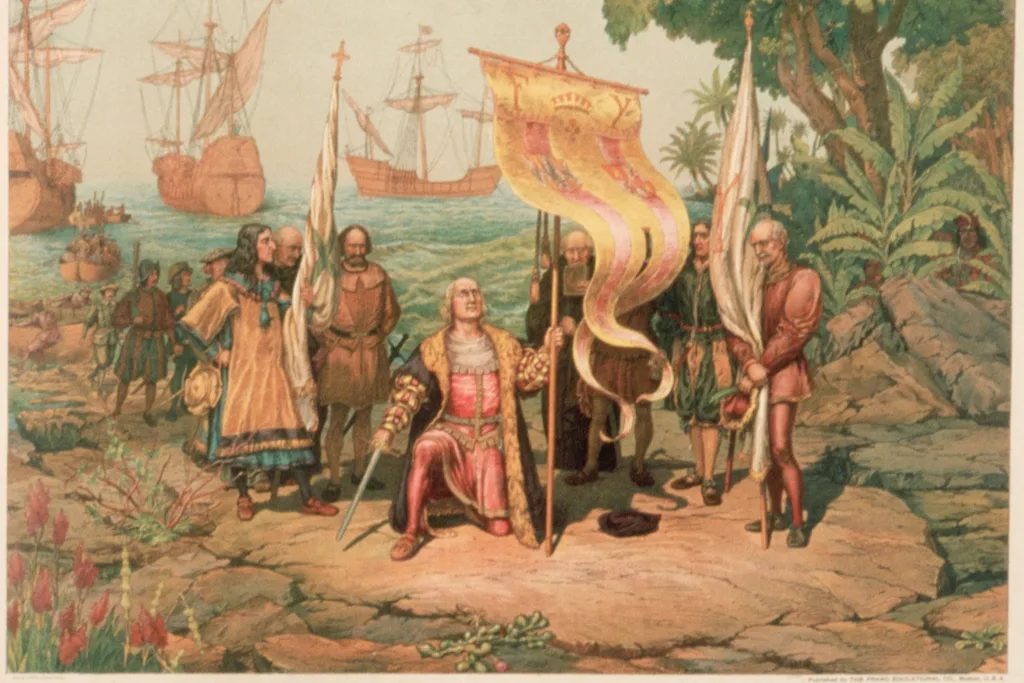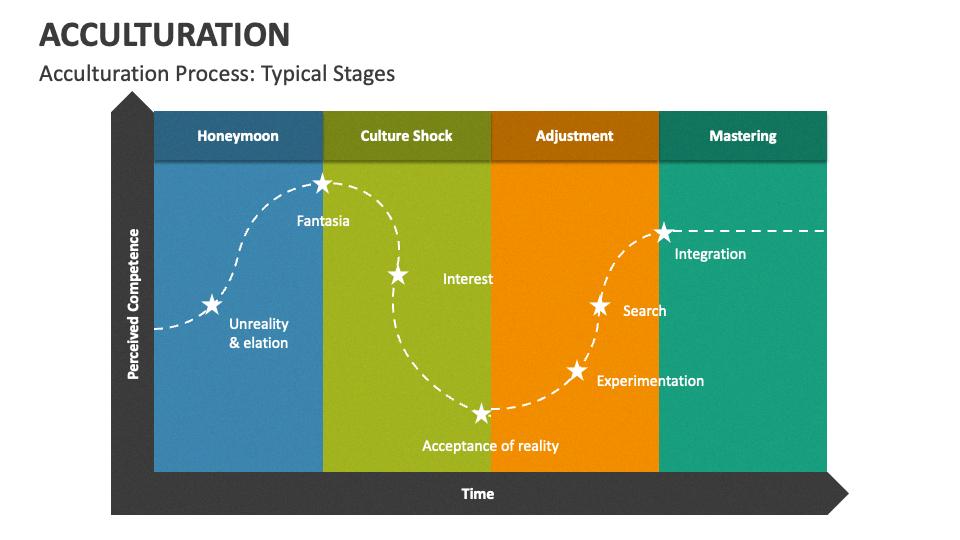Acculturation is the process by which individuals or groups adopt the cultural practices of another society. It can occur as a result of migration, globalization, or even exposure to different cultures throuh media and travel. While it can be a complex and nuanced process, examples of acculturation can be seen in various aspects of our daily lives.
One of the most visible examples of acculturation is the adoption of different cuisines. In the United States, for instance, Mexican, Chinese, and Indian cuisines have gained widespread popularity, with many traditional dishes being altered to cater to local tastes. This phenomenon is not limited to the U.S., as it can be seen in other countries where immigrants have brought their cultural foods and adapted them to local ingredients and tastes.
Another example of acculturation is the exchange of clothing and fashion. This can be seen in the way that fashion trends from different cultures are adopted and adapted in various parts of the world. For instance, traditional African prints have become popular in Western fashion, while Western clothing styles have found their way into many non-Western cultures.
Language is another significant aspect of acculturation. When immigrants move to a new country, they may learn the language of their new home, while still retaining their native language. This can lead to a blending of languages and the creation of new dialects, as seen in the development of Spanglish in the U.S. or Franglais in Canada.
Acculturation can also manifest in changes in attitudes or behaviors. For example, children raised in a certain culture may learn the norms and values of their parents and extended family, but when they enter school, they may be acculturated into the dominant culture of their society. This can lead to changes in their attitudes towards issues such as gender roles, individualism, and social norms.
Acculturation is a multifaceted process that can occur in many different ways. Whether through the adoption of new foods, fashion, language, or attitudes, acculturation is a natural part of cultural exchange and can lead to a richer and more diverse world.
Examples of Acculturation Today
One eample of acculturation that can be observed today is the widespread acceptance and adoption of various ethnic cuisines within the United States. This phenomenon is characterized by the introduction of Mexican, Chinese, and Indian foods and cooking styles to the American mainstream. Additionally, many immigrant populations are also embracing American foods and meals, resulting in a blending of cultures and tastes. This cultural exchange is not limited to food, however, as it can also be seen in the exchange of clothing and fashion, as well as the adoption of new languages and customs. this example illustrates how acculturation can lead to the creation of new cultural practices and traditions that are enriched by the contributions of diverse groups.

Source: churchleadership.com
Examples of Acculturation in Schools
An example of acculturation in school could be a student who comes from a different cultural background and learns to adapt to the new school environment while still retaining their original cultural identity. This could involve learning a new language, adjusting to different social norms, and becoming familiar with the school’s academic expectations. The student may also incorporate aspects of their original culture into their school life, such as wearing traditional clothing or participating in cultural celebrations. The process of acculturation can be challenging, but it can also lead to a richer and more diverse school community.
Examples of Acculturation in Children
Acculturation in children can be observed in various ways. For instance, when a child from a non-English speaking family enters an English-speaking school, they must learn the language and adapt to the cultural norms of the school environment. This process of acculturation involves learning new behaviors, values, beliefs, and customs that are different from what the child is accustomed to in their family. The child may also adopt new attitudes and preferences towards food, clothing, music, and othr aspects of life that are common in the dominant culture. Over time, the child may become more fluent in the language and feel more comfortable in the school environment, ultimately leading to a sense of belonging and integration into the larger society. This is just one example of how acculturation can occur in children as they navigate different cultural contexts throughout their lives.
Examples of Enculturation
Enculturation is the process by which individuals learn and adopt the customs, values, beliefs, and social behaviors of their culture. It starts from childhood and continues throughout life. There are several examples of enculturation that can be observed in our daily life. For instance, learning slang or how to behave in certain situations by watching television, reading books, or social media platforms. Children learn the language, customs, and beliefs of their family, school, and community by observing and interacting with others.
Observing athletes in magazines, advertisements, or sports events also teaches an individual to value a healthy lifestyle, exercise, and physical fitness, which are highly valued in many cultures. Additionally, watching movies, listening to music, or reading books that represent a particlar culture can help individuals gain insight into the beliefs and values of that culture.
Furthermore, observing how friends talk to each other, what they wear, how they behave, and what they value can also teach an individual the acceptable language, customs, and values of their culture. For instance, some cultures value collectivism, while others value individualism. Enculturation also involves learning social norms, such as how to greet people, how to dress appropriately, and how to behave in public.
Enculturation is the process by which individuals learn and adopt the customs, values, beliefs, and social behaviors of their culture through various means such as media, family, peers, and education. Enculturation is essential for individuals to develop a sense of identity, belonging, and socialization within their culture.
The Meaning and Examples of Acculturation
Acculturation is a term that refers to the process of immigrants adapting and incorporating the values, beliefs, language, customs, and mannerisms of the new country they are living in. This includes learning and adopting behaviors that influence health, such as dietary habits, activity levels, and substance use.
Acculturation can be a gradual process that occurs over time, as immigrants and their families beome more familiar with the customs and norms of their new country. For example, an immigrant family may start to adopt new dietary habits, such as consuming more fast food or processed meals, which are more commonly consumed in their new country. They may also start to engage in more sedentary activities, such as watching TV or playing video games, which are more prevalent in their new culture.
On the other hand, some immigrants may choose to maintain their traditional customs and practices, even while living in a new country. For example, they may continue to prepare and consume traditional meals, engage in physical activities that are common in their culture, and speak their native language with family and friends.
It is important to note that acculturation can have both positive and negative effects on health. While adopting healthy behaviors can lead to improved health outcomes, such as reducing the risk of chronic diseases like obesity, heart disease, and diabetes, acculturation can also lead to the adoption of unhealthy behaviors, such as smoking, excessive alcohol consumption, and sedentary lifestyles.

The Best Example of Acculturation: A Quizlet
Acculturation refers to the process of cultural exchange that occurs when two or more distinct cultures come into contact with each other. One of the best examples of acculturation on Quizlet is the way in which immigrants modify thir recipes to suit the tastes of their new host country. For instance, Chinese immigrants who run restaurants in America may modify traditional Chinese dishes such as General Tso’s Chicken or Sweet and Sour Pork to appeal to American palates. This involves changing the ingredients, cooking techniques, and presentation of the dish to make it more familiar and appealing to the local customers. This process not only helps the immigrants to integrate into their new culture but also allows them to share their own culture with others. Acculturation is an ongoing process that involves negotiation, compromise, and adaptation, and it is one of the key ways in which cultures evolve and change over time.
Types of Acculturation
Actually, there are four types of acculturation, not three. Acculturation refers to the process of adapting to a new culture when an individual or group migrates or moves to a new country or region. The four acculturation strategies are assimilation, separation, integration, and marginalization.
Assimilation occurs when an individual or group completely adopts the new culture and abandons their own culture. This means that they adopt the language, customs, and values of the new culture and reject their own culture.
Separation, on the other hand, occurs when an individual or group maintains their own culture and avoids contact with the new culture. This means that they do not adopt the new culture and do not interact with members of that culture.
Integration occurs when an individual or group adopts some aspects of the new culture while also maintaining their own culture. This means that they actively seek to learn and understand the new culture while also maintaining their own identity and culture.
Marginalization occurs when an individual or group is unable to maintain their own culture and is also excluded from the new culture. This can lead to feelings of isolation and alienation.
It’s important to note that thee acculturation strategies are not fixed and may change over time depending on individual and societal factors.
The Impact of Acculturation in the Classroom
Acculturation in the classroom refers to the process of individuals from different cultural backgrounds adapting to the mainstream culture of the classroom. It involves a shift in behaviour, attitudes, and values as students navigate the expectations and norms of the educational environment.
In the context of education, acculturation often involves the integration of minority students into the dominant culture of the classroom. This process can be challenging for students who may experience cultural conflicts or feel pressure to assimilate.
Teachers can support acculturation by creating a culturally responsive classroom environment that recognizes and values the diversity of students. This includes incorporating culturally relevant materials and teaching practices, providig opportunities for students to share their cultures, and fostering positive relationships between students from different backgrounds.
Ultimately, the goal of acculturation in the classroom is to create a welcoming and inclusive learning environment where all students can thrive academically and socially, regardless of their cultural background.
Is Colonization an Example of Acculturation?
Colonization can be considered an example of acculturation. When a group of people from one culture takes control over another culture, the dominant culture tends to impose its values, beliefs, and practices on the subordinate culture. As a result, the subordinate culture may experience acculturation, which can involve adopting some aspects of the dominant culture, rejecting others, and modifying their own culture in response to the new cultural context. The process of acculturation can be complex and can have both positive and negative effects on both the dominant and subordinate cultures. However, it is important to note that colonization oftn involves unequal power dynamics and can lead to the suppression and loss of the subordinate culture’s traditions and identity.

The Effects of Acculturation on Children
Acculturation in children refers to the process by which children adapt to a new culture and way of life as a result of moving to a new country or community. This process involves learning and adopting new cultural values, beliefs, attitudes, and behaviors whie also maintaining some aspects of their original culture. Acculturation can occur in different ways, and it may vary depending on the child’s age, cultural background, and the extent of exposure to the new culture. Some children may experience acculturation through formal channels such as schools or community programs, while others may learn through informal interactions with peers and family members. acculturation is an important factor in the adjustment of immigrant children and can have a significant impact on their social, emotional, and academic well-being.
Applying Acculturation in the Classroom
Acculturation refers to the process of adapting to a new culture or incorporating elements of a new culture into an existing one. In the classroom, acculturation can be applied by incorporating cultural awareness into the curriculum. This can be done by expressing interest in the ethnic background of your students and incorporating elements of their culture into your teaching. It is important to redirect your role in the classroom from instructor to facilitator, allowing students to share their cultural experiences and perspectives. Maintaining a strict level of sensitivity to language concerns and proviing resources for students who are learning English is also crucial. maintaining high expectations for student performance and providing opportunities for all students to succeed can help to promote cultural awareness and create a welcoming and inclusive classroom environment. applying acculturation in the classroom requires a commitment to cultural sensitivity and an openness to learning from your students.
The Impact of Family Acculturation
Family acculturation is a process that occurs when a family moves from one culture to another, and it involves the integration of family members into the host society. This process is complex and can take a long time to complete. Family members must learn the new language, customs, and values of the host society, whle also maintaining their own cultural identity. The process of family acculturation can be challenging, as family members may experience cultural conflicts and stress as they adjust to their new environment. However, successful family acculturation can lead to increased social and economic opportunities, improved family relationships, and a stronger sense of belonging in the host society. family acculturation is an important process that helps families adapt to new cultures and thrive in their new environment.
Examples of Acculturation in Human Geography
Acculturation is a process where one culture adopts certain elements from another culture. A prime example of acculturation in human geography is the spread of Buddhism from India to different parts of Asia. As Buddhism spread, it incorporated various local beliefs and practices, leading to the formation of diverse Buddhist traditions acros Asia. Another example is the spread of Western culture, including clothing, music, and food, to different parts of the world. This has led to the adoption of elements of Western culture by people in other countries, even as they retain their own cultural identities. Acculturation can lead to the formation of new cultural practices and beliefs, and it plays a crucial role in shaping the diversity of human societies around the world.

Source: collidu.com
Types of Acculturation
Acculturation refers to the process of cultural change that occurs when two or more cultures come into contact with each other. Based on the conditions under wich cultural contact and change take place, two major types of acculturation may be distinguished: incorporation and directed change.
Incorporation, also known as “unidirectional acculturation,” occurs when a dominant culture imposes its values, beliefs, and practices on a subordinate culture. This type of acculturation often happens in colonial or imperial contexts, where the dominant culture seeks to assimilate the subordinate culture into its own. In this process, the subordinate culture is typically forced to abandon its own traditions and adopt those of the dominant culture.
Directed change, on the other hand, refers to a more equal and reciprocal process of cultural exchange. This type of acculturation occurs when two or more cultures come into contact and exchange ideas, beliefs, and practices in a more balanced and flexible way. Directed change often happens in multicultural societies, where different cultures coexist and interact with each other over time. In this process, both cultures are able to maintain their own traditions and incorporate elements from the other culture.
While both incorporation and directed change involve cultural change, the conditions under which they occur are quite different. Incorporation involves a more one-sided process, while directed change involves a more equal and reciprocal exchange of cultural ideas and practices.
The Role of Schools in Enculturation
Enculturation in school happens through a variety of methods. One of the most important ways is through formal instruction, where students are taught about the culture of their community or nation. This can include learning about history, literature, art, music, and other cultural practices. Teachers also model and reinforce cultural norms and values through their behavior and interactions with students.
In addition, informal learning also plays a significant role in enculturation in school. Students learn about their culture through interactions with peers, participation in extracurricular activities, and exposure to different perspectives and ideas. This can help students develop a sense of identity and belonging within their cultural group.
Furthermore, the physical environment of a school can also contribute to enculturation. Decorations, symbols, and artifacts can convey cultural messages and values, while the layout and design of the school can reflect cultural priorities and beliefs.
Enculturation in school is a multifaceted process that involves both formal and informal learning, as well as the physical environment of the school. Through thse methods, students learn about their culture and develop the knowledge and skills needed to become active and engaged members of their community.
Conclusion
Acculturation is a complex process that involves the exchange of cultural values, beliefs, and practices betwen different groups. It can occur at both individual and group levels, and can manifest in various domains such as food, clothing, language, and behavior. Examples of acculturation can be seen in the adoption of Mexican, Chinese, and Indian cuisines within the U.S, as well as the simultaneous adoption of mainstream American foods by immigrant populations. Children are also enculturated into the culture of their parents and others in their immediate family, but are later acculturated into the dominant culture of their society as they enter wider environments. It is important to understand the process of acculturation and its various manifestations in order to promote cultural understanding and respect in our increasingly diverse world.
